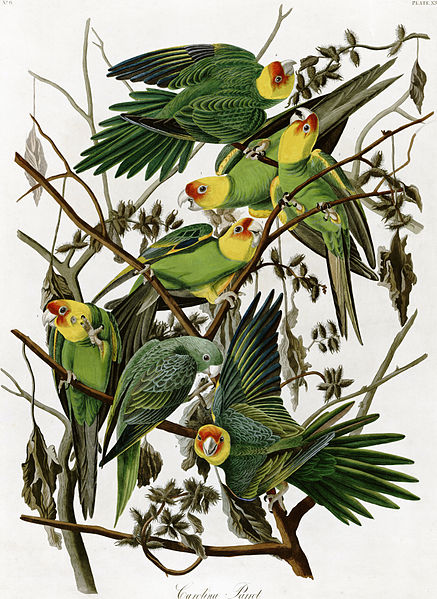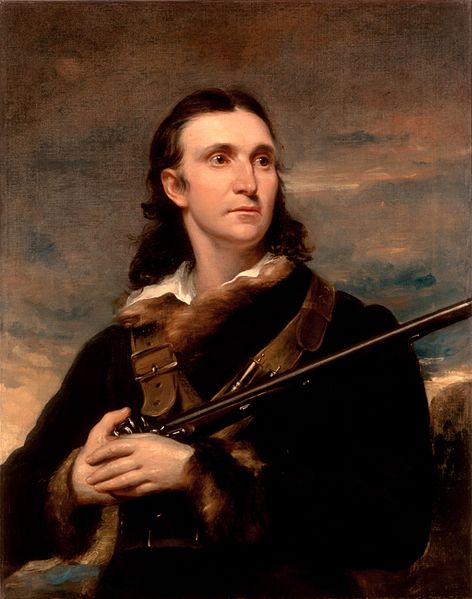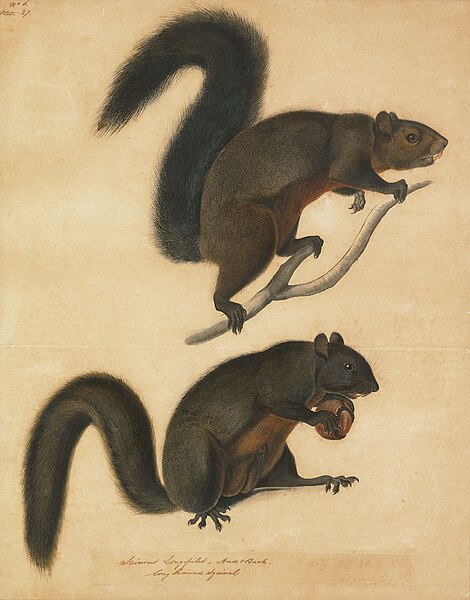The Birds of America is a book by naturalist and painter John James Audubon, containing illustrations of a wide variety of birds of the United States. It was first published as a series in sections between 1827 and 1838, in Edinburgh and London. Not all of the specimens illustrated in the work were collected by Audubon himself; some were sent to him by John Kirk Townsend, who had collected them on Nathaniel Jarvis Wyeth's 1834 expedition with Thomas Nuttall.
The cover shows a Louisiana heron, Egretta tricolor (now called tricolored heron)
Plate 1 by John James Audubon depicting a wild turkey (Meleagris gallopavo).
Carolina parakeet (Conuropsis carolinensis), now extinct
The fourth volume, on display at the National Museum of Natural History
John James Audubon was a French-American self-trained artist, naturalist, and ornithologist. His combined interests in art and ornithology turned into a plan to make a complete pictorial record of all the bird species of North America. He was notable for his extensive studies documenting all types of American birds and for his detailed illustrations, which depicted the birds in their natural habitats. His major work, a color-plate book titled The Birds of America (1827–1839), is considered one of the finest ornithological works ever completed. Audubon is also known for identifying 25 new species. He is the eponym of the National Audubon Society, and his name adorns a large number of towns, neighborhoods, and streets across the United States. Dozens of scientific names first published by Audubon are still in use by the scientific community.
Portrait of Audubon by John Syme, 1826
La Gerbetière, mansion owned by Audubon's father in Couëron, where young Audubon was raised
Plate 41 of The Birds of America by Audubon, depicting ruffed grouse
John James Audubon, Long Haired Squirrel, c. 1841.








